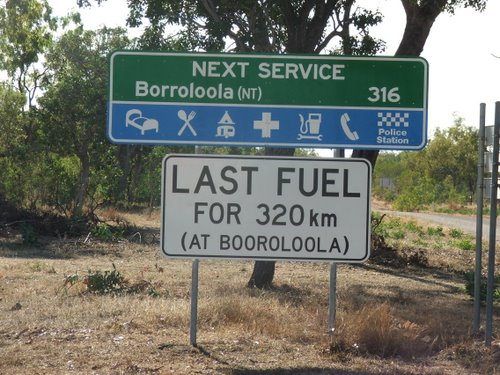Tips on Driving in Australia
Last Updated October 13, 2007Driving Tips
 First off – if you have just taken a long plane flight and crossed multiple time zones please do not pick up a car at the airport. You will be much better off getting public transit or an airport shuttle (shared taxi) to your hotel and getting over the jet lag.
First off – if you have just taken a long plane flight and crossed multiple time zones please do not pick up a car at the airport. You will be much better off getting public transit or an airport shuttle (shared taxi) to your hotel and getting over the jet lag.
- Bring your local driver’s licence with you – this should all you need if it is in English, licenses not in English may need to be accompanied by an International permit – which basically is a translation and not standalone – you need the licence too.
- Your licence will only cover you for the same type of vehicles as you are licensed for at home: except with a standard car licence you can drive a small automatic scooter (<50cc and speed resrticted) available in tourist locations such as Cairns and the Gold Coast.
- Not all cars are automatics in Australia, though they are becoming more common, if you hire or buy an older vehicle it might be a manual transmission.
- Australians drive on the left, which will take a bit of getting used to for North American or Europe visitors. The cities are the easiest to get used to it in – the other traffic and many road signs will make it obvious that you should stay left. The dangerous time is travelling on lightly trafficked roads where you may automatically drift to the right or pull out to the right. The key is to remember that the driver must be sitting towards the middle of the road.
- Speed limits vary but are typically 50km in town and 100km on the open road or 110km on the freeway. The open speed limit in the Northern Territory is 130km (until recently it was unlimited). Near schools you will see 40km limits during school opening/closing times, school terms only.
- There are plenty of speed cameras, radar detectors to enforce speed limits and random breath tests to enforce the blood alcohol limit of 0.05mg.
- Central Melbourne has the notorious hook rule on a few central city intersections. The central city has an extensive tram network with trams running down the middle of the road and having right of way over cars. When you want to turn right at one of these intersections you move to the leftmost lane and wait until the light turns red against you and then you have the right away in front of the traffic driving straight thru on your left. It is very weird but does in practice work surprisingly easily. Scarily on narrow inner city streets you will share the single lane with trams as well – you give way to both the tram and passengers walking across your path to alight or enter the tram.
- Where there is a more than one lane of traffic on the open road stay left unless passing or turning.
- Roundabouts are common in town: if there are more than one lane stay left if turned left or going straight thru, use the right lane if turning right. Indicate left or right on entry as you would for an intersection.
- Unlike the USA you cannot turn left (right in the US) on a red light – not unless you want a ticket!
- Outback Tips for Driving
- Roadtrains – can consist of up to 4 trailers and can be over 50meters long. They aren’t allowed everywhere but you will see lots of them if you are travelling away from the populated east coast. They travel at 100km and can take a long time to pass. On dirt roads you are better to pull off and stop to allow them to pass (in either direction) – the amount of dust thrown up by them will blind you for too long to be safely driving.
- Sometimes in remote areas you will see signs that appear to warn of aircraft landing – they do occasionally roads double as emergency airstrips and in those cases – cars give way!
- On dirt roads or single track roads in the outback drive in the centre of the road but slow down and pull to the left if there is on-coming, or overtaking traffic.
- Slow down for cattle grids – they can also be bent or conceal a drop in the road service on the other side – getting airborne is never good for your suspension.
Posted in Driving Tips